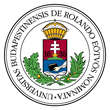AZ EGYETEMI KÖNYVTÁR ÉVKÖNYVEI 6. (Budapest, 1972)
Egyéb tanulmányok - Kalmár Lajos: The intellectual background of the bird depictions of the Corvinian Victorinus (Summary)
mely fajtáját elkezdi," 166 hogy megfelelhessen e Victorinus által ismertetett cicerói követelményeknek: csakis imitátorunk módján törekedhet. A Victorinus-corvina címlap illuminációjának topikus vizsgálata egységes kompozíciót igazol. A textussal szoros összefüggésben a „szabad művészetek" közül stílszerűen a beszédre vonatkozó „szellemtudományiak": a Grammatica, Rhetorica (eloquentia) és Dialectica kibontakozása, tehát a Trivium konstrukciója jelenik meg humanista — kezdeti periódusát tükröző — szellemben. Kibontakozása: az „egyéniség megvalósítása" az Eloquentia bölcsessége által. Vagyis a példakép: Cicero követése által. Az egyéniséget jelző „elevenség" a „Quatuor thesis" eredményeként jelenik meg a gondolkodási forma centrumának „külső tartásán". Ezért az A CD „konkrét jelöléshez kapcsolt szellemi tartalom" 167 : e szimbolikus forma „szükségszerűen a tudatosság formájához kötött." Evidens tehát, hogy a topikus egységek qualitasának lényege a Гошбб-utalásban rejlik. Az ACD „külső tartás" által kijelölt szimbolikus forma ugyanis e „tudatosság formájához" kötöttségével az „idő formájához kötött." 168 Kellőképpen igazolja ezt a fólió topikus-egységeinek élénk aktivitást hangsúlyozó qualitasa. Ezért e topikus vizsgálat eredménye nem tekinthető végeredménynek. A gondolkodási forma „elevensége" a statikus határokon túl dinamikus aspektusra utal. Ahol a topost új fogalom: a situs, e modelleknek az „idő formájához kötött" helyzete szituációja váltja fel. Ily módon kísérelhetjük meg a konkrét történelmi környezet és e gondolkodási forma szoros kapcsolatát rekonstruálni. ГНЕ INTELLECTUAL BACKGROUND OF THE BIRD DEPICTIONS OF THE CORVINIAN VICTORINUS (SUMMARY) The codex — Marius Victorinus: Commentarii in Ciceronis librum De Inventione (OSZK. Clmae., 370.) — was written for János Vitéz about 1460, at the time of his episcopate at Nagyvárad. Later it found its way to King Matthias' famous Corvinian Library, and it is therefore called Corvinian Victorinus. Up to now the miniatures of its title page (fol. 1 R ) — naturalistic depictions of birds and flowers —• have been treated by the literature merely as customary decorative elements. In contrast with this conception the present paper evinces the homogeneously structured symbolic composition of the illumination embellishing the title page of the Corvinian Victorinus. The reading of its system of symbols is based on the topical relations of the miniatures. With the appearance of three singing birds, namely the goldfinch (will), the tom-tit (imagination) and the bullfinch (faith), there emerges from the central topical unity of the folio, in association with the text, the soul aspiring after the virtue of eloquence. This topical unity — reflecting as it does an endeavour — is supplemented by the parrot (wisdom), in order that the virtue of eloquence may become practicable. The primary conditions of this are the two flowers forming the fundamental topical unity of the folio : as the pendant to 1) the Rose (Mary), Lady Grammatica, who is an effectual intercessor with 2) the medicinal columbine, i. е., classically powerful, „divine" Cicero. The supreme complement of these topical units is at the top of the folio — on the „formulae" of the coffer field of the initial „0" appearing with the attributes of Dialectica — the opposition between two dragonserpents, denoting "conflictus". In close connection with the text this symbolic composition thus reflects appropriately the 168 „Omnis, quicunque incipit cuiuscunque generis orationem, ..." Victorinus-corvina tol. 1 R . 187 „Unter einer symbolischen Form soll jede Energie des Geistes verstanden werden, durch welche ein geistiger Bedeutungsgehalt an ein konkretes sinnliches Zeichen geknüpft und diesem Zeichen innerlich zugeeignet wird." Ernst Cassirer: Wesen und Wirkung des Symbolbegriffs. Oxford, 1956. Der Begriff der symbolischen Form im Aufbau der Geisteswissenschaften. 175. 1. 168 „Aller geistige Inhalt ist für uns notwendig an die Form des Bewusstseins und somit an die Form der Zeit gebunden." Cassirer: i. m. 176.1. 202
